About anaglyph 3D: Photographs here are in 3D, using anaglyph techniques which combines two photographs one in red and the other in cyan (blue + green) color. To get the 3D effect, you must use glasses with red and cyan lenses (filters) over your regular glasses. The form of the beak is far easier to interpret in 3D and we strongly recommend to the viewer that the glasses be obtained (this is especially helpful when viewing enlarged images - i.e. click on the image). These beak photographs were made using Red and Cyan Anachrome Aviator Glasses (see: http://www.anachrome.com/glassbuy.htm or http://www.amazon.com) which cost under $10.00 (USD).
About O. volatilis: To be added.
| | Ornithoteuthis volatilis, immature, sex ?, 70 mm ML,
2.0 mm LRL, South Pacific. Photographs by R. Young. | Ornithoteuthis volatilis, sex ?, 216 mm ML, 6.0 mm LRL,
Equatorial Pacific. Photographs by R. Young.
|
|
Side
view
|  Click on an image to view larger version & data in a new window 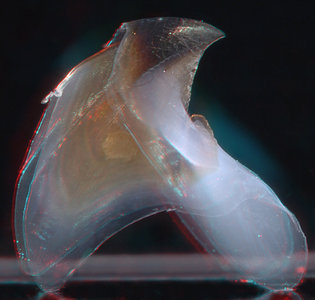 |  Click on an image to view larger version & data in a new window 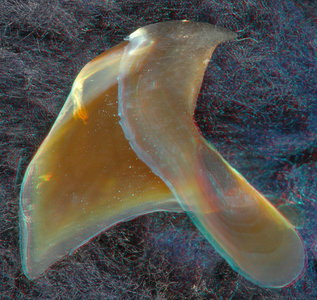 |
|
oblique
view
|  Click on an image to view larger version & data in a new window 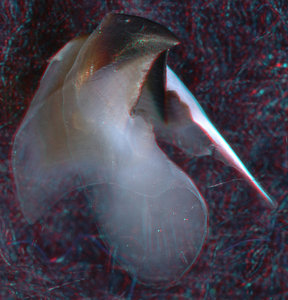 |  Click on an image to view larger version & data in a new window 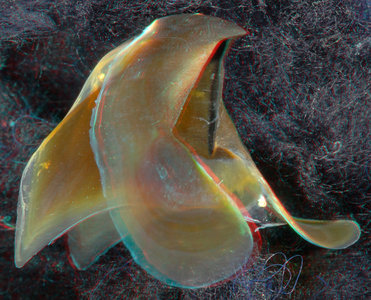 |
|
Oblique
view
|  Click on an image to view larger version & data in a new window 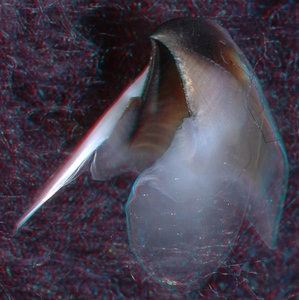 |  Click on an image to view larger version & data in a new window 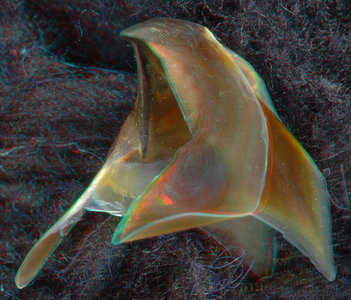 |
|
"Top"
view
|  Click on an image to view larger version & data in a new window 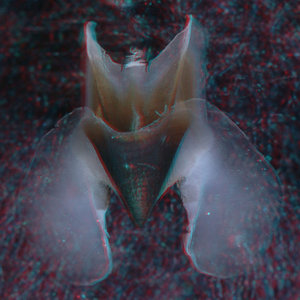 |  Click on an image to view larger version & data in a new window 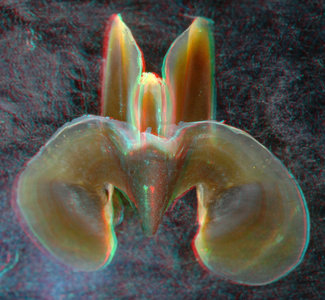 |
|
Oral
view
|  Click on an image to view larger version & data in a new window 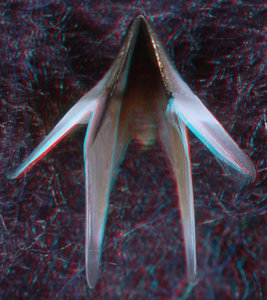 |  Click on an image to view larger version & data in a new window 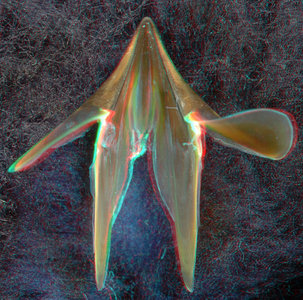 |
|
Front
view
|  Click on an image to view larger version & data in a new window 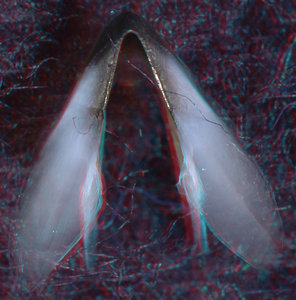 |  Click on an image to view larger version & data in a new window 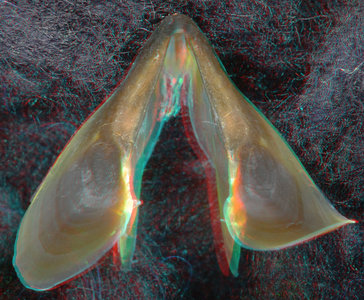 |
|
Posterior
oblique
view
|  Click on an image to view larger version & data in a new window 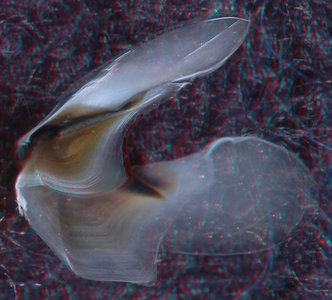 |  Click on an image to view larger version & data in a new window 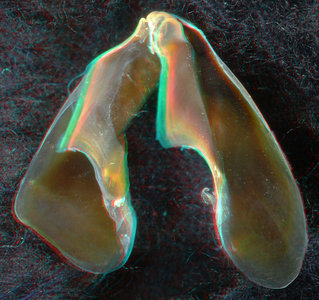 |
Comments
Description of the upper beak can be found here.
About This Page

University of Hawaii, Honolulu, HI, USA
Correspondence regarding this page should be directed to Richard E. Young at
Page copyright © 2009
 Page: Tree of Life
Ornithoteuthis volatilis: Description of lower beak
Authored by
Richard E. Young.
The TEXT of this page is licensed under the
Creative Commons Attribution-NonCommercial License - Version 3.0. Note that images and other media
featured on this page are each governed by their own license, and they may or may not be available
for reuse. Click on an image or a media link to access the media data window, which provides the
relevant licensing information. For the general terms and conditions of ToL material reuse and
redistribution, please see the Tree of Life Copyright
Policies.
Page: Tree of Life
Ornithoteuthis volatilis: Description of lower beak
Authored by
Richard E. Young.
The TEXT of this page is licensed under the
Creative Commons Attribution-NonCommercial License - Version 3.0. Note that images and other media
featured on this page are each governed by their own license, and they may or may not be available
for reuse. Click on an image or a media link to access the media data window, which provides the
relevant licensing information. For the general terms and conditions of ToL material reuse and
redistribution, please see the Tree of Life Copyright
Policies.



















 Go to quick links
Go to quick search
Go to navigation for this section of the ToL site
Go to detailed links for the ToL site
Go to quick links
Go to quick search
Go to navigation for this section of the ToL site
Go to detailed links for the ToL site